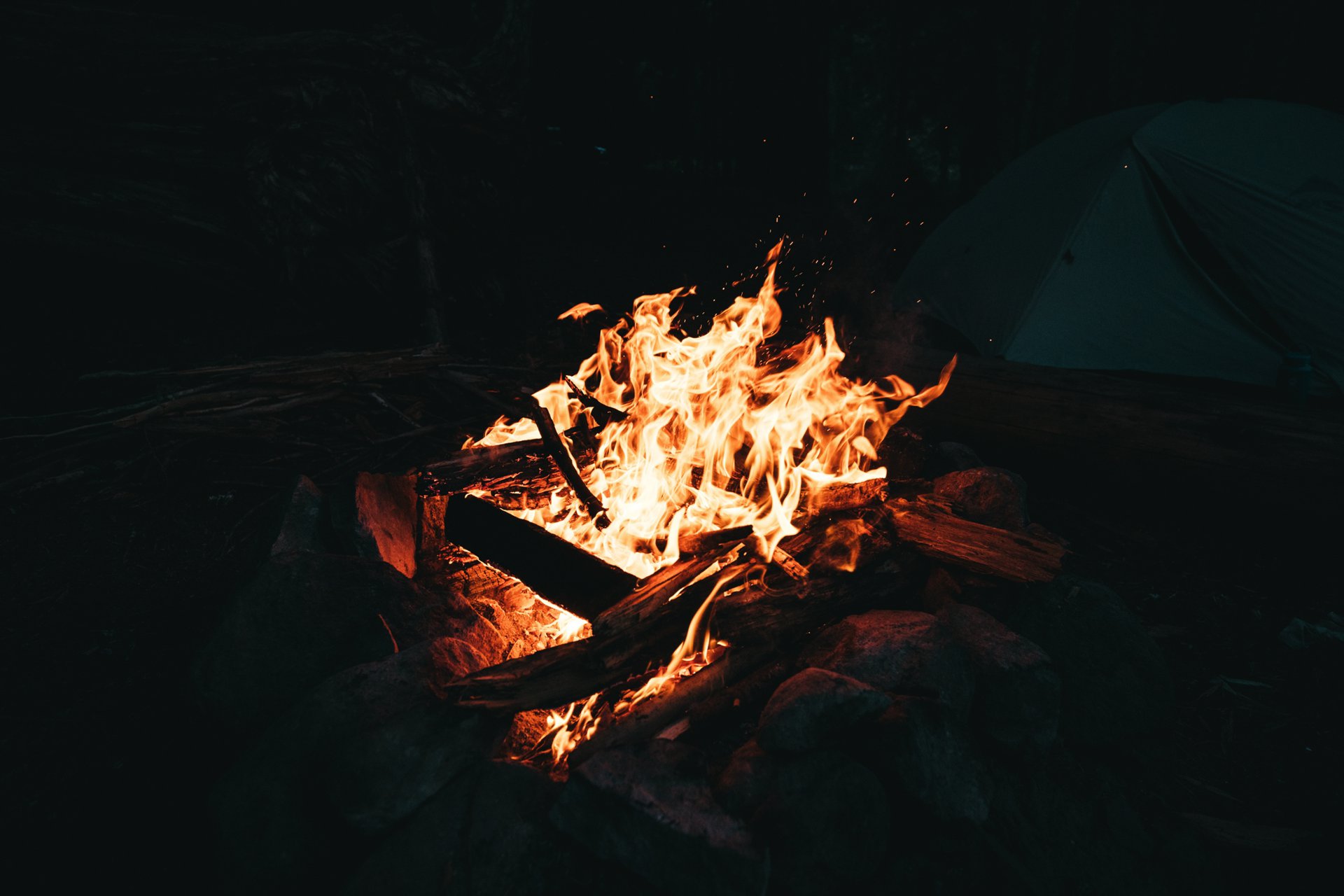Tarpaulins and science. That’s what they should have called it. Huddled beneath a tarp sagging with the weight of an unseasonable deluge as I burned a leech off a stranger’s leg, I wondered why I was there and not sitting in front of the taps at the local.
A week earlier I had seen a post on an environmental Facebook group for an event called ‘Campfires and Science’ to be held in Toolangi State Forest, not far from where I live. It promised sitting around a campfire discussing environmental science and management practices, a free dinner and a sojourn into the forest after dark to look for endangered native fauna. I was intrigued and so the next weekend, tent strapped to the back of my motorbike, I rode up into the hills of Toolangi as storm clouds gathered overhead.
I arrived a bit before dark and found Thijs, a friend I’d invited along among the small crowd of people huddled around a fire. It turned out he and I were the only ones who didn’t know everyone else there.
Before I arrived, a small group had braved the impending rain to go stag watching – essentially siting under a grand old hollow-bearing tree on sundown and watching for what critters may emerge – and they now returned thoroughly soaked. Which brings us to the leech. Thijs had never had a leech on him before and wasn’t sure how to get it off. I convinced him that burning it off was the way to go (it’s not).

The rain eased as we ate a warm dinner beneath our tarp, while Don Butcher recited bush poems about foul-mouthed bullockies and the raging Snowy River. Afterwards we braved the cold to go on a spotlighting walk – a staple of every Campfires and Science event. Members of WOTCH (Wildlife of the Central Highlands) taught us how they surveyed endangered species with thermal cameras and recorded their location with GPS in an effort to save these areas from logging. On my first spotlight with Campfires and Science, I was lucky enough to witness something I’d never seen before – a male lyrebird (affectionately referred to as a ‘bush chook’ by our guide Nat), roosting high off the ground in a Mountain Grey Gum. It was the first of many things I learned about the forest that I never knew before, despite growing up hiking, camping and fishing in the area.
Campfires and Science has attracted a veritable brains trust of local naturalists, land managers and scientists since its inception. The success of the events has led to the establishment of the organisation Science for All (under the auspices of The Royal Society of Victoria), which now runs the events in partnership with other organisations including WOTCH and the Australian National University. These events aim to bring everyone around the campfire to share and create knowledge. While the focus is often on learning about our natural heritage, Campfires and Science brings experts in fields as diverse as astronomy, local history and thermal imaging to the fire to share their knowledge.
A few speakers have become near-legend among the regulars, like Don Butcher, a seasonal ranger at Kakadu and walking guide, who is an absolute font of knowledge – plants, animals but also history and culture. Steve Meacher from Friends of Leadbeater’s Possum has graced our fire a few times, even bringing his telescope and showing us the stars.

The greatest privilege so far has been to meet experts who literally wrote the book on south-eastern forest ecology. Lachlan McBurney and David Blair from the ANU guided us on a stag-watch through the stunning O’Shannassy Catchment – a nationally significant tract of wet sclerophyll forest with heavily restricted access. Sitting on the tailgate of the Hilux parked under the towering Mountain Ash of the catchment, they told us about the history of the site, its significance as a research plot and what animals we were likely to encounter.
What began as a few mates gathered around the fire talking about their love for the bush has grown into an organisation that educates and affects real change. It has shown the value and resilience of a model built upon social media, although it hasn’t been as easy as just creating an event on Facebook. The camps are only possible through the work of a few very dedicated individuals who organise food, lead walks and make sure no one gets lost in the forest after dark.
Science for All has plans to run many projects in the future. With all of these projects, the central value is involving people in every stage of the work. Everyone is welcome to get involved in any way that they can – we need people with diverse expertise and knowledge to help make our Science for All and Campfires and Science events even more fun and engaging.
We’re currently planning more Campfires and Science events for 2019 and would love to hear from anyone who wants to get involved.
For more information or to get involved, visit scienceforall.world.
Banner image courtesy of Kal Loftus on Unsplash.


Leave a Reply